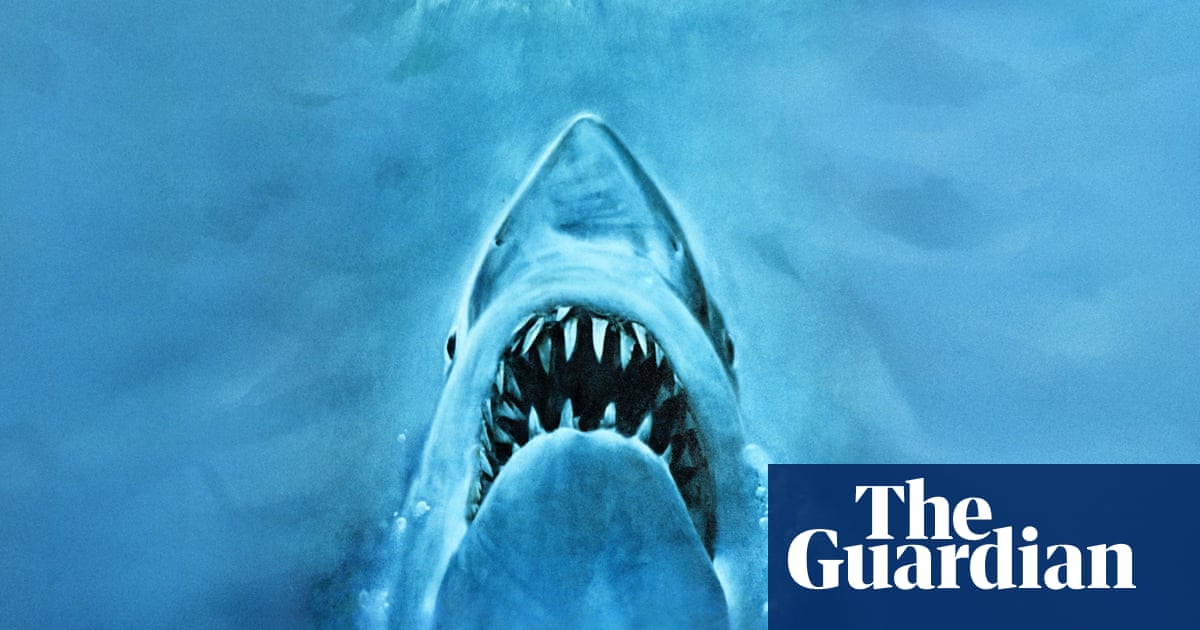Fifty years ago the world was changed for ever by a shark. On 20 June 1975, cinemagoers in the US were the first to experience the visceral thrills and oceanic spills ofJaws. It’s the original blockbuster, it inspired an entire genre of “sharksploitation” entertainment, and it transformed what millions thought about sharks, for better and for worse.
In many ways, Steven Spielberg’s marine masterpiece was an accident. In 1973, the novelist Peter Benchley came up with the title Jawsjust 20 minutes before his final deadline. “What does it mean?” asked his editor. “I haven’t the faintest idea,” replied Benchley, “but at least it’s short.”
Nicknamed Bruce (after Spielberg’s lawyer), the mechanical shark used in the film malfunctioned so much that it appeared in the final edit for a mere four minutes, and not fully until nearly an hour in. Instead Spielberg focused on fear and threat, and the rest is history.
Yet perhaps he did his job too well. Ross Williams, editor of The Daily Jaws website, says the film “cast a long shadow over sharks. It turned fear into frenzy, and that fear translated into decades of persecution”. After 1975, shark culls and trophy hunts soared globally. All this despite statistics showing that in America ahuman is more likely to be bittenby a New Yorker than a shark.
Research suggests that between 1986 and 2000, in the north-west Atlantic Ocean, there was a population decline of 89% in hammerhead sharks, 79% in great white sharks and 65% in tiger sharks, many of which were caught in fishing nets.Figures published in Sciencehave estimated shark deaths from fishing at 80m a year, 25m of which are threatened species.
The zoology writer Jules Howard says that “in the case of great whites it’s a hit job … It’s depressing, since sharks like these are not monsters. They’re complex, communicative beings that happen to be very well adapted for killing things. You’d think we’d see the similarities, somehow.”
Spielbergexpressed his remorseon the BBC’s Desert Island Discs, saying: “The decimation of the shark population because of the book and the film … I really truly regret that.”
And yet Jawshas had positive effects too. Benchley became involved in marine conservation, as did the film’s underwater photographers Ron and Valerie Taylor and Rodney Fox. Speaking to the Guardian from Australia, Fox says the fascination with sharks sparked by Jaws“culminated in not just the conservation of sharks, but to a care and understanding of the important role they play in the wider marine environment”.
Howard is just one of many who bear this out: “I remember that feeling,” he says. “Seeing the film. Buying the shark books. Understanding sharks in a deeper way. Wanting to shout loud to see them respected, conserved, saved.”
Williams adds: “It’s not about fearing sharks anymore. It’s about fearing a world without them.”
Sign up toFilm Weekly
Take a front seat at the cinema with our weekly email filled with all the latest news and all the movie action that matters
after newsletter promotion
Meanwhile, the public consciousness is more shark-infested than ever. Many have played it for cheap thrills and, increasingly, laughs, such as Roboshark, Ghost Shark, Sharkenstein, Five-Headed Shark Attackand of course Sharknado! But others, like last year’s Something in the Water,have tried to replicate the fear of Jawswhile showing sensitivity to the animals. Its British director, Hayley Easton Street, says: “I wanted the sharks to just be animals that need to find food, not vicious killers hunting humans.”
Today the ocean’s apex predator is part of our lexicon, in phrases such as “jumping the shark”, and they’ve even swum into populist politics. Boris Johnsoninvoked the mayor from Jawsduring the pandemic for keeping the beaches open; while Donald Trump has speculated on the relative merits of being electrocuted orattacked by a shark. Perhaps most notoriously of all, Korean company Pinkfong’s version of the children’s song Baby Sharkis the most watched YouTube video of all time, racking up 15bn views and counting. No great white has ever caused that much trauma.
Would Jawsget made now? In a 1995 essay for Smithsonian magazine, Benchley reflected: “If I were to write the book today, the shark would have to be the victim.” These astonishing animals are still fighting to escape the shadow of the film, but thanks to the next generation of scientists, advocates, and reformed storytellers, the tide may finally be turning.
Jon Harvey’s Intothe Sharkiverseis on BBC Sounds.
